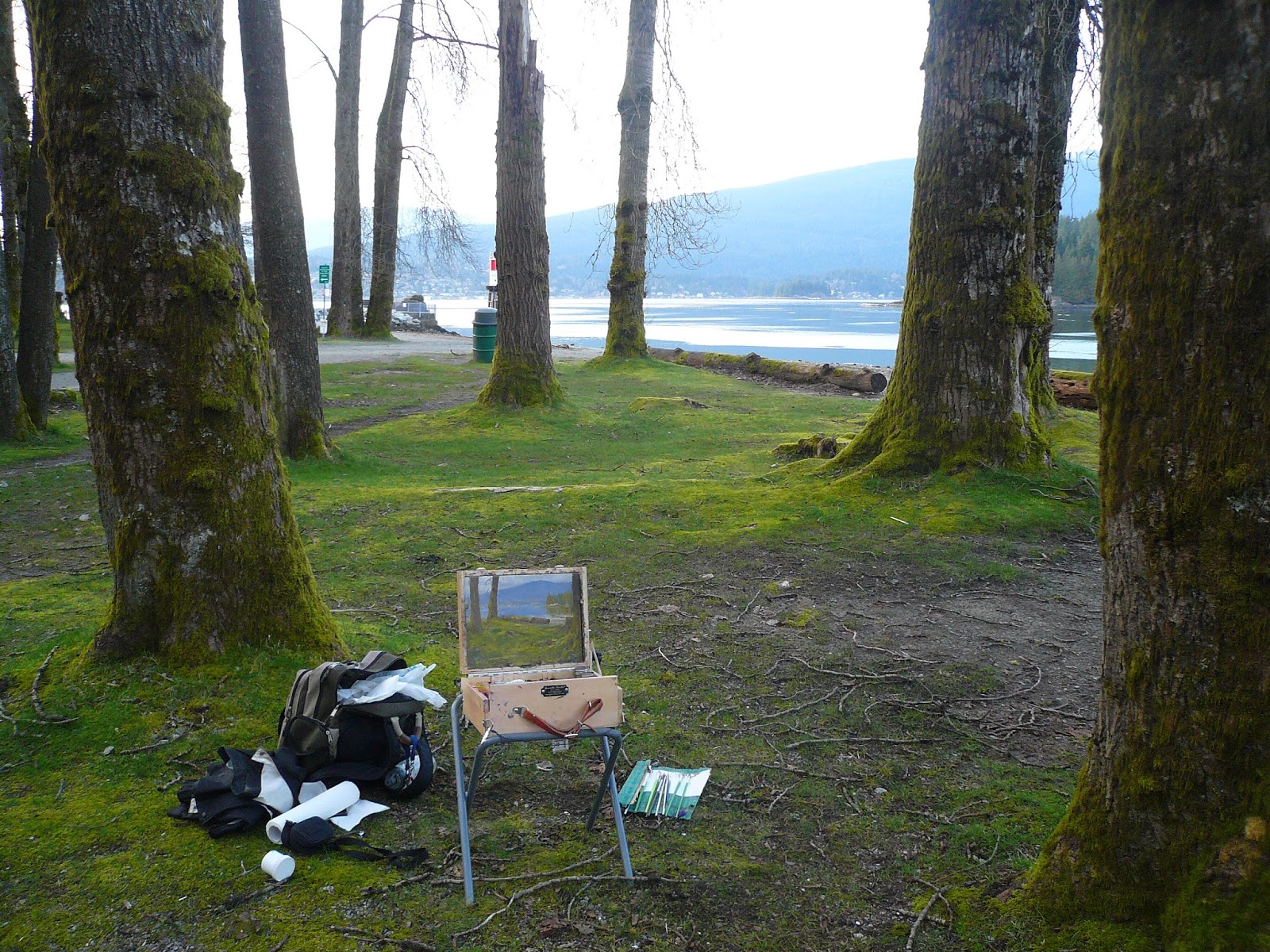Reflections can come in many forms, most visibly affected by the wind. When it's very windy, the surface is not roughed up, so the reflection is broken up and the water only has diffuse reflection and appears rough. Sometimes the wind only blows on a patch of water and makes it rough whereas everywhere else is smooth and reflective. When there's no wind and no movement of water we have almost mirror reflection (from a low view angle anyway). In this painting, the look of the reflection changed through many phases and when it showed up as in the below picture, I decided I liked it best and kept it in the painting. It's one of the reasons why I like painting on location, it gives me many options and choices that I wouldn't have otherwise from a photo. I am not a very imaginative person so i require nature to give me her many faces.
 |
| Red Alder on Penzance beach - oil on panel - 9" x 12" |
I still want to do more paintings using this palette, but preferably with the majority of the surface be yellows or reds, so the black would appear more blue.
 |
| When I first started. You can see that the reflection is not very appealing. |
Here is a more cheerful spring painting. I wanted to paint the cherry blossom so bad I gave this tree cherry flowers even though it wasn't blooming.
 |
| - oil on panel - 9" x 12" |
 |
| A window at Barnett - oil on panel - 9" x 12" |
I am liking painting with the pochade box on my laps instead of the tripod. It feels a lot more intimate to me. I do have to set it down every time when I get up and step back to look at the painting.
I love it when I don't feel rushed during painting. Here I was sitting near the water at Barnett park, with birds squabbling, mostly seagulls and crows, the robins were singing; a few people were casting crab traps near by, making slashes once in a while; and I was faced with the mirror like water and leaf buds on the birches in stillness, it was perfect.
The hardest part in this painting was to keep the birches dark. They were white, my brain told me they were white, but I had to paint dark browns and greens because that's what they were against the sky, not white. Fighting the convention with the truth that your eyes are telling you requires discipline that I am enjoying learning it.
 |
| Los amigos - oil on panel - 9" x 12" |
 |
| The sun would come out every now and then. |




































